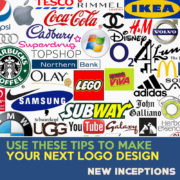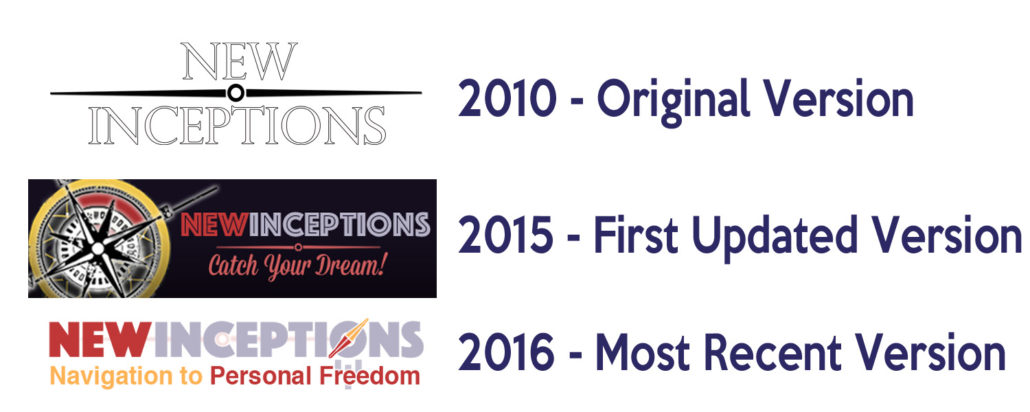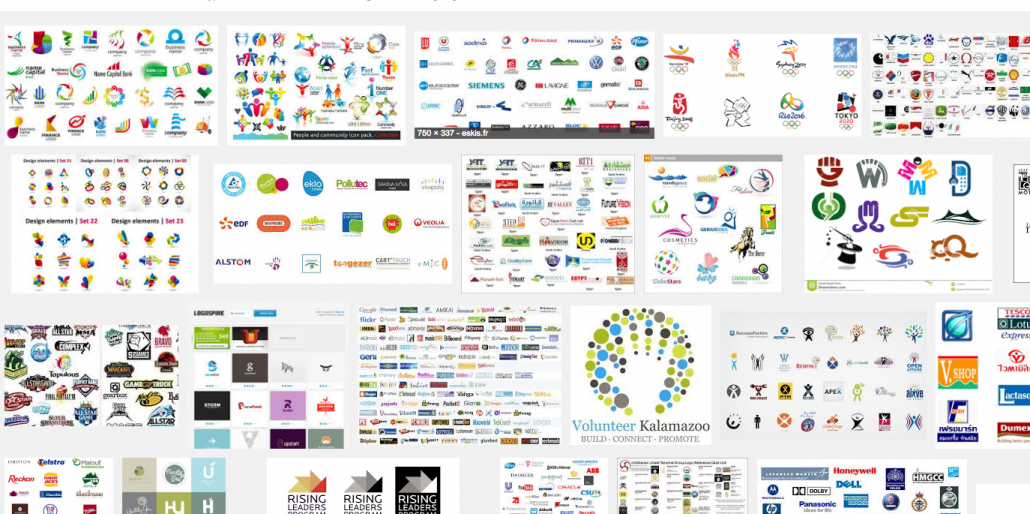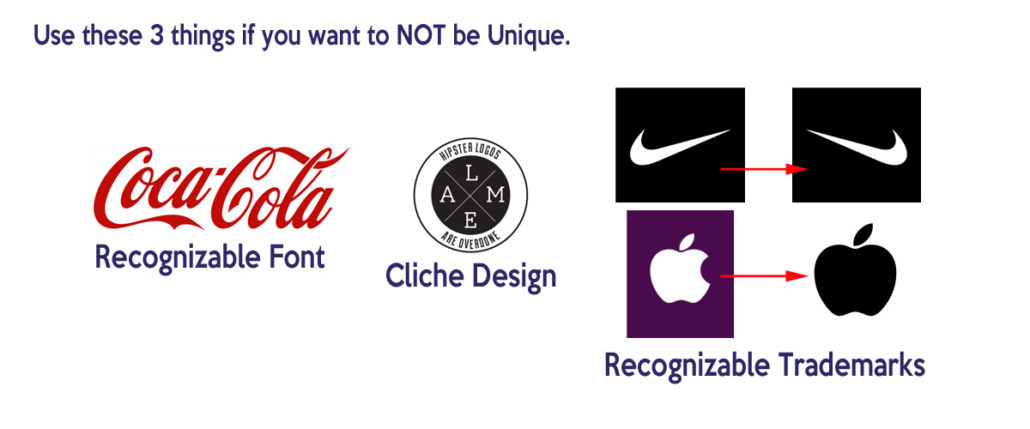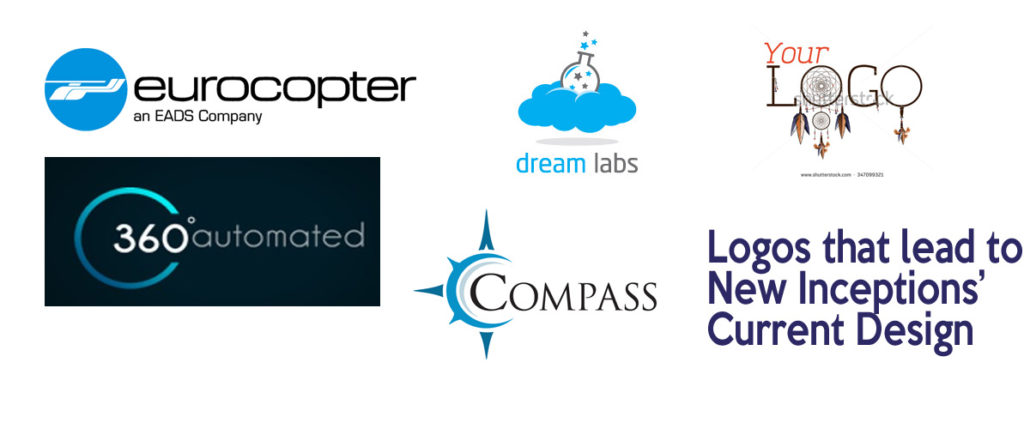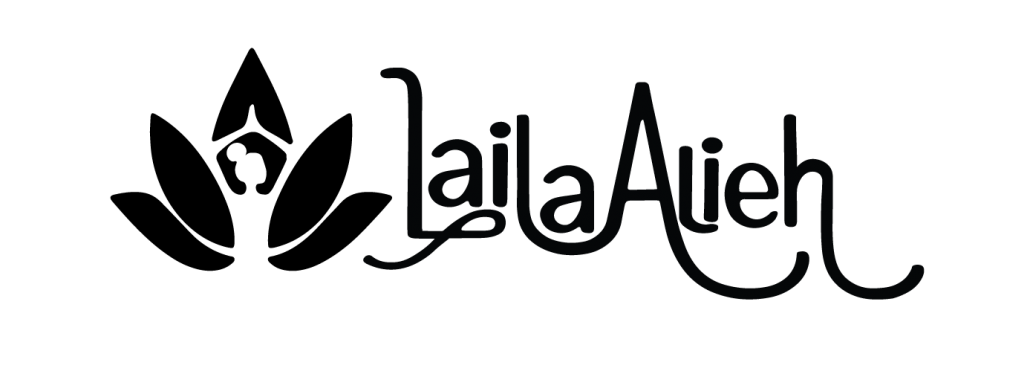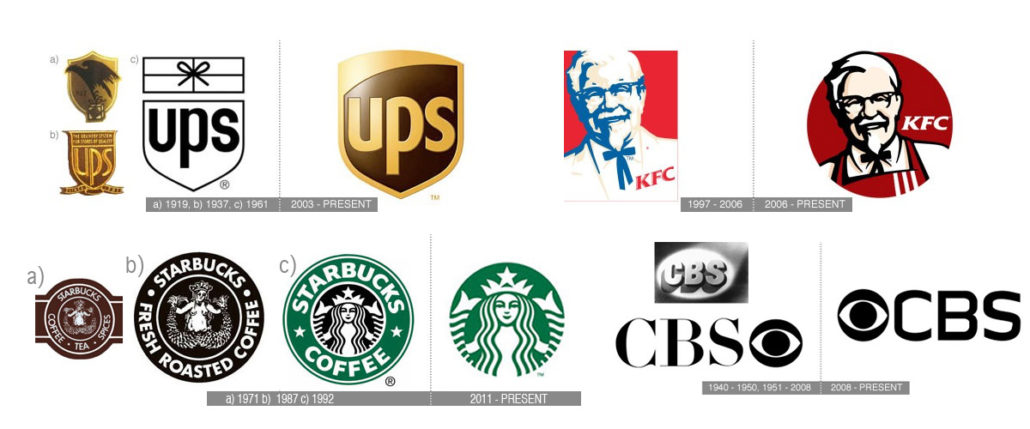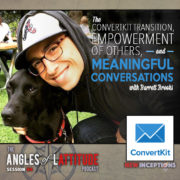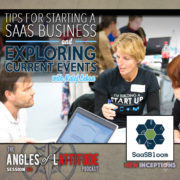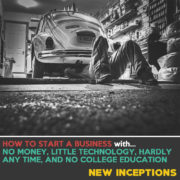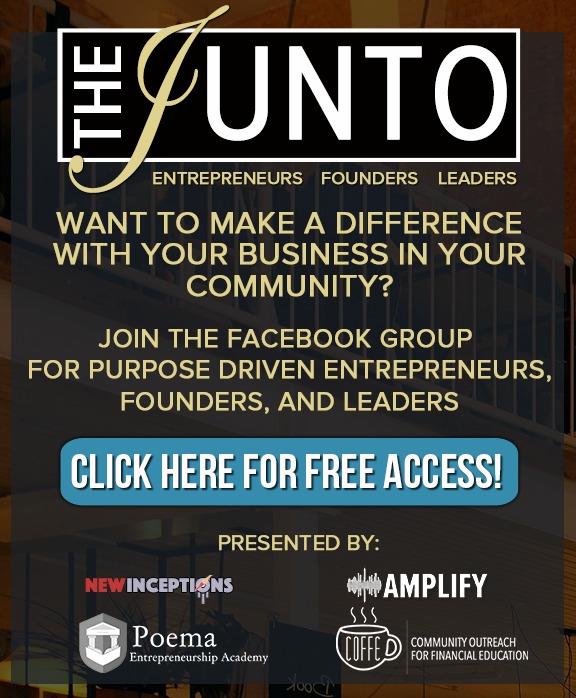Use These Tips to Make Your Next Logo Design
When I relaunched New Inceptions in 2015, one of the things that I knew I had to do was make a new logo. Not only was the one I had outdated, but I didn’t really know where the original Photoshop file went.
Between the first iteration of the logo and the current version, I’ve learned a thing or two about logo design.
What works, what doesn’t work, and why some logos don’t seem to go out of style.
That said, I thought since I’m asked this question quite a bit (right there with “What should I call my new business?”) I thought I’d give you guys a detailed framework of how to make a logo for yourself whenever you start a new brand or a new business.
You’ll be learning:
- Part 1: Getting Ideas for Your Logo
- Part 2: Making Your Logo
- Part 3: Mistakes you want to be sure you avoid
Part 1: Getting Ideas for Your Logo
When it comes to logos, you can either pay someone else to do them, rr, in true New Inceptions fashion, do it yourself quickly and inexpensively.
Either way you go, it’s best to give you or your artist some inspiration to work from. Something you can say, “I like this but I don’t like this”.
Your goal in this section is to simply give you or your artist pieces of previous work to work from – but not necessarily define what your logo is going to look like.
Among many other instances, artists are known to use this technique when they’re making portraits (just as Norman Rockwell’s Triple Self Portrait shows here). It’s called having a reference.
These logos that you’re going to be picking are those reference pics.
Here’s how you find reference pics (images):
- Go to Google Image Search
- Type in “reference image logos” (or the name of a favorite brand, or central point of your design + “logo”)
- Click an image you might want to use as a reference.
- When that image is highlighted, you’ll see an option to “View more”. Click that if you want to see more like the one you clicked.
- Save as many examples as you like. I try to aim for 15 or 20 logos when I’m doing this initial combing of images. If you luck out, you might find something like one of these:
Here’s the link for this search.
Limiting Your Choices to Your Top 3 to 5 Choices
So, here’s the deal. You should currently have 15 or 20 images that you like. Something that you’ve just given a thumbs up to.
But we want to go deeper than that. We want to now start looking at logos that maybe you like some part of. Or how something is laid out. Or perhaps you like the font. Here are 5 criteria that you want to use in choosing which logos you want to (or your artist) to work from.
Simple and Flexible
You can go from being simple to complex, very quickly. Look at my 2nd rendition of my logo. It’s a logo, but it’s very complex. I was doing ok with the font, but it wasn’t clean. It was a hodge podge of ideas.
So, what I ended up being suggested to me on Fizzle was that I needed to clean it up. Start using my brand colors and just tighten all my concepts down. Oh, and don’t forget that the font needed to be simpler as well.
End result? Something someone doesn’t have to sit there and analyze – but yet included the compass, dreamcatcher, and a catchy slogan.
Appeal to Different Audiences
Here’s something else to consider. You don’t want to have a rigid design. Again, if you look at my 2nd version, there wasn’t going to be many ways I could use that design. While I might be able to float it on a blog, using it through social media in the profile squares might have been a bit of a pain. Again, simplifying the design allows me to use the letters “NI” for social media.
Design needs to be Versatile
To put this simply, you want to have the ability to use your logo in different situations. Does it look good online? Sure.
But how does it look on say a coffee mug, shirt, or a poster?
How does it look with different kinds of color? Grayscale?
At this point this is mainly opinion. So when you’re attempting to find your reference shots, keep these all in mind.
Be Unique!
Now, if the reference logos you’ve been thinking about using are too unique or cliche, this is where you drop them off.
How do you know if they’re too unique to use in your design?
Glad you asked!
Everyone knows the Coca-Cola logo – so don’t use it or anything that looks like it. Don’t use some design of an apple unless it’s with something else. No backward swooshes. Get the idea?
In other words,
- Don’t Use Cliche Designs
- Don’t Use Recognizable Fonts
- Don’t Use Recognizable trademarks
Part 2: Making Your Logo
Now, you should have limited your selection of logos down to 3 to 5 different logos.
Just for an example, here are 5 that I limited my selection down to:
Next step: actually making your logo.
You want to get your hands on some sort of Graphic Manipulation software.
I use an antiquated version of Photoshop to do all of my work (CS5). It actually crashes from time to time. BUT you don’t need Photoshop to create an image from scratch.
In fact, there’s a free alternative called GIMP. GIMP has been around for a long time, but I’ve never actually used it! As a student back at Purdue, I was able to land a copy of Photoshop pretty inexpensively. Thank you student software rates!
Why did I opt for Photoshop instead of a free copy of GIMP? Mainly because GIMP wasn’t super user friendly. However, tt seems they’ve come a long distance since then.
If you want to check out using GIMP, here’s a tutorial I found for you.
Things to Consider When Making YOUR Design:
Make sure you logo has a story to tell. Meaning that it shows how and why you’re different.
Here’s how you do that and what I was thinking when I made my logo:
What is your business about?
New Inceptions is about helping people chase their dreams and make a living from that. Hence the dreamcatcher and the compass.
What kind of personalities are you trying to attract?
I want to attract people who feel like they’re trapped. That they’re not using their fullest potential. So I’m appealing to all 4 personality types.
- Use bright colors for the expressives.
- Use boldness for the drivers.
- Use the right slogan for the analyticals and the amiables.
Show that you incorporate thinking and meticulous ideology in your work.
When I redesigned my new logo, I made sure I considered proper proportion and symmetry. While some people might be super creative and use white space as part of their design, I instead opted to use what’s called a double entendre. It’s basically where you use two pictures in one. I combine the compass and the dreamcatcher whenever possible.
If your business involves activity, then you might want to consider showing that in your design.
Laila’s logo shows a woman’s silhouette doing a yoga pose and the tails of the letters seem to be growing as well. (Notice that these tails also give her a font that is highly customized.)
And finally, remember that this is not about perfection. You don’t have to get it right the first time.
In fact, a ton of our favorite brands have done their own logo changes throughout the years:
So don’t expect to be perfect with your first, second, or third design!
Part 3: Common Mistakes that Designers Make
Finally, here are a few pitfalls that you or your artist want to make sure you avoid as your developing your logo.
- Don’t Over Innovate – The coolest logo isn’t specifically the most complex. Keep it simple!
- Don’t Underestimate Custom Fonts/Typography – If you have the talent or know someone that can do design work with letters, let them go for it. I can imagine that my next logo will feature more of this.
- Don’t be predictable – Again, don’t use common elements in your design. If you do, perhaps do it in a way that’s unique! Here’s a cluster of circles that make the Twitter logo:
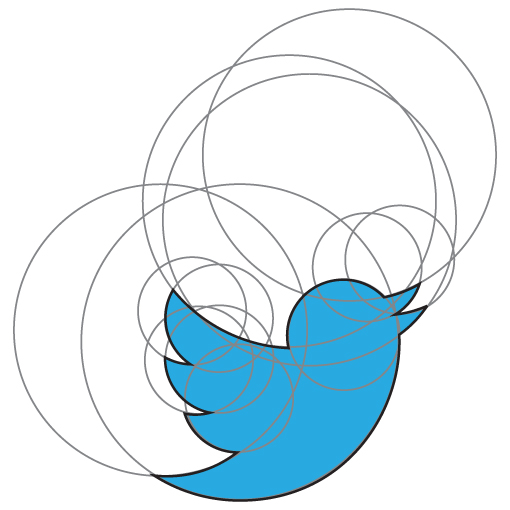
- Don’t use special effects in your designs – Don’t forget that we want our design to be flexible just like those that we used as reference. Special effects don’t lend themselves to coffee mugs and shirts too well!
- Don’t constantly change your logo – You might have noticed that Facebook routinely changes their design and layout of Facebook. However, they never touch their logo. Don’t make it a habit to change your logo or colors regularly.
Wrap Up
So that’s how you make a logo – or at least how I’ve made mine and helped others do the same.
There’s a lot there. So here’s the short version:
- Find some non generic designs that you can get ideas from. Start with 10, 15, or 20 logos and bring it down to 3 to 5.
- Get some Graphic Manipulation Software – Can’t beat Photoshop, but GIMP is free.
- Create your logo using parts or ideas from other designs. But don’t copy directly. Use them as inspiration.
- Make sure your design tells the story of your business.
…
Think you’re ready to craft your new logo for your business but still have questions?
Leave your question in the comment section below. I’ll be personally reading and responding to all questions.

